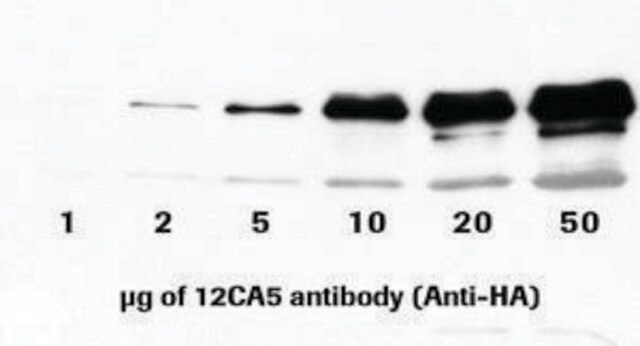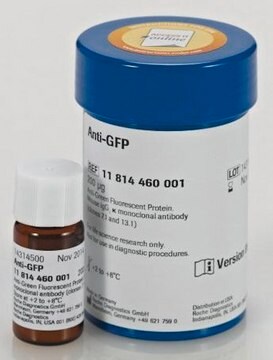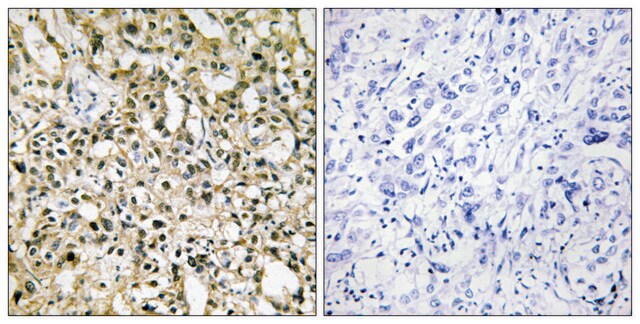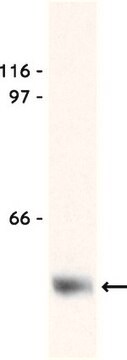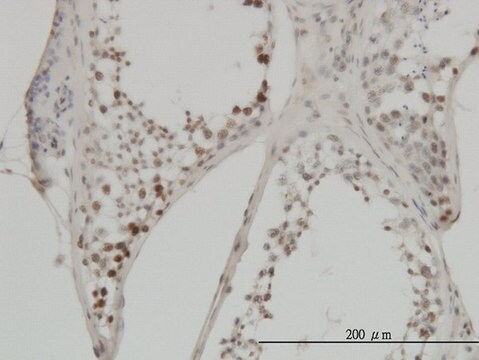ROAMYC
Roche
Anti-c-myc
from mouse IgG1κ
Synonym(s):
anti-myc
About This Item
Recommended Products
biological source
mouse
Quality Level
conjugate
unconjugated
antibody form
purified immunoglobulin
antibody product type
primary antibodies
clone
9E10, monoclonal
Assay
90% (SDS-PAGE)
form
frozen liquid (11667203001)
lyophilized (11667149001)
packaging
pkg of 200 μg (11667149001)
pkg of 5 mg (11667203001 [1 ml])
manufacturer/tradename
Roche
technique(s)
dot blot: suitable
immunocytochemistry: suitable
immunohistochemistry: suitable
immunoprecipitation (IP): suitable
western blot: suitable
isotype
IgG1κ
epitope sequence
EQKLISEEDL
storage temp.
−20°C
General description
The cellular myelocytomatosis (c-myc) is the cellular homologue of the v-myc gene originally isolated from an avian myelocytomatosis virus. The gene encoding it is mapped to human chromosome 8q24. It c-myc is a member of MYC gene family. c-Myc gene codes for basic helix-loop-helix/leucine zipper (bHLH/LZ) transcription factor that regulates the G1-S cell cycle transition.
Contents:
- 11 667 149 001: lyophilizate, stabilized
- 11 667 203 001: frozen solution, (5 mg/ml)
Specificity
Immunogen
Application
- Dot blots
- Immunocytochemistry
- Immunoprecipitation
- Western blots
- Immunohistochemistry.
Biochem/physiol Actions
Quality
Preparation Note
The following concentrations should be taken as a guideline:
- Western blot: 1 to 10 μg/ml
Working solution: Tris-buffered saline containing 0.1% Tween 20.
Reconstitution
Analysis Note
Other Notes
Not finding the right product?
Try our Product Selector Tool.
Storage Class Code
11 - Combustible Solids
Flash Point(F)
does not flash
Flash Point(C)
does not flash
Choose from one of the most recent versions:
Already Own This Product?
Find documentation for the products that you have recently purchased in the Document Library.
Customers Also Viewed
Our team of scientists has experience in all areas of research including Life Science, Material Science, Chemical Synthesis, Chromatography, Analytical and many others.
Contact Technical Service



